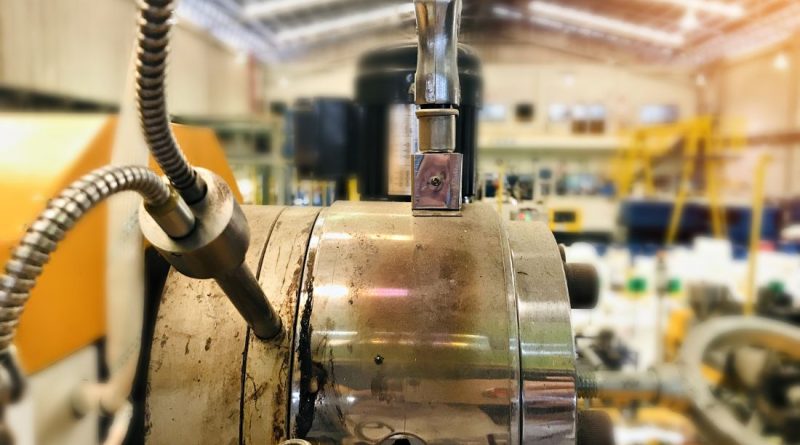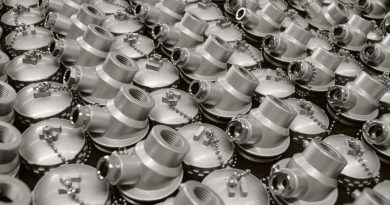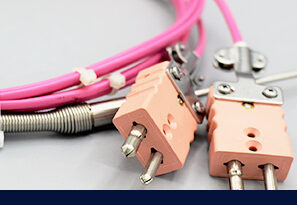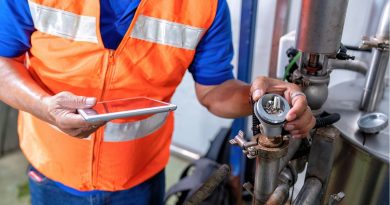Thermocouples for High Temperature Applications: Types and Benefits
Are you looking for reliable temperature sensors for high temperature applications? Thermocouples are vital temperature sensors used in many industries, especially where high temperatures are involved. They measure temperature by creating a voltage from two different metals joined together. This article explores thermocouples for high temperature applications, their types, benefits, and how to choose the right one, supported by real-world experiences and expert insights.
An Introduction to Thermocouples for High Temperature Applications
A thermocouple is a device that measures temperature based on thermoelectricity. It consists of two different metals joined at one end, creating a voltage that represents the temperature. When the junction experiences a temperature change, it generates a voltage proportional to the temperature difference between the junction and a reference point.
How Thermocouples Work
Thermocouples operate on the Seebeck effect. When two dissimilar metals are joined and heated, they produce a voltage related to the temperature difference. This voltage can be measured and converted into a temperature reading.
Basic Components of a Thermocouple
– Wires: Made from different metals, like nickel, copper, or platinum.
– Junction: The point where the two wires meet.
– Reference Junction: The other end of the wires, kept at a known temperature.
Types of Thermocouples
– Various thermocouple types (Type K, J, T, etc.) are tailored for specific temperature ranges and environments.
Advantages of Thermocouples
Thermocouples are favored for several reasons:
– Wide Temperature Range: They measure temperatures from cryogenic levels to over 2000°C (3632°F).
– Durability: A high temperature thermocouple can withstand harsh conditions.
– Cost-Effective: Generally cheaper than other temperature sensors.
Types of High Temperature Thermocouple
Several thermocouple types are designed for high temperature applications. Knowing these types helps in selecting the right thermocouple.
Type K Thermocouples
Type K thermocouples are among the most commonly used in high-temperature settings. They consist of a nickel-chromium (positive) and nickel-alumel (negative) wire.
- Temperature Range: Up to 1260°C (2300°F).
- Common Applications: Used in kilns, gas turbine exhaust, and other high-temperature environments.
Type S Thermocouples
Type S thermocouples consist of platinum-rhodium and platinum, making them ideal for ultra high temperature applications.
- Temperature Range: Up to 1600°C (2912°F).
- Common Applications: Used in laboratories and for high-precision temperature measurements.
Type R Thermocouples
Type R thermocouples are similar to Type S, also made from platinum-rhodium and platinum.
- Temperature Range: Up to 1600°C (2912°F).
- Common Applications: Suitable for high-temperature industrial processes.
Type B Thermocouples
Type B thermocouples consist of platinum-rhodium wires and are used for the highest temperature applications.
- Temperature Range: Up to 1800°C (3272°F).
- Common Applications: Ideal for melting metals and in glass manufacturing.
Ultra High Temperature Thermocouple
For temperatures exceeding the limits of standard thermocouples, an ultra high temperature thermocouple utilizes advanced materials to withstand extreme conditions.
- Temperature Range: Exceeds 1800°C (3272°F).
- Common Applications: Used in aerospace, foundries, and other extreme environments.
How to Choose the Right Thermocouple Type
Choosing the right thermocouple for high-temperature applications involves several considerations.
Temperature Range
Begin by determining the temperature range you need to measure. Different thermocouple types have varying upper limits. Ensure the one you select matches your application’s needs.
Environment
Consider the operating environment of the thermocouple. Factors such as:
– Corrosive Atmosphere: Some materials resist corrosion better.
– Physical Stress: If exposed to vibration or movement, choose a more durable type.
Accuracy Requirements
Different thermocouples offer varying accuracy levels. If precision is crucial, consider a Type S or R thermocouple.
Response Time
Response time is essential in applications with rapid temperature changes. Generally, smaller diameter thermocouples provide faster response times.
Budget
Finally, factor in your budget. While some thermocouples may be pricier due to materials and construction, they may offer longer lifespans and better performance, making them a worthwhile investment.
Key Benefits of Using Thermocouples at Elevated Temperatures
Thermocouples designed for high temperatures offer several advantages, making them a preferred choice in many applications.
Wide Temperature Measurement Range
One major benefit of thermocouples is their ability to measure a broad temperature range. They function effectively in environments where other sensors fail.
Rapid Response Time
Thermocouples provide quick readings, especially when installed correctly. Fast response is critical in processes where temperature fluctuations impact performance or safety.
Durability and Reliability
High temperature thermocouples withstand extreme conditions, including thermal shock and mechanical stress. This durability ensures consistent readings over time.
Versatility
Thermocouples serve various applications, from laboratory settings to industrial processes. Their versatility allows for diverse uses in both high and ultra-high temperature scenarios.
Cost-Effectiveness
Compared to other temperature measurement devices, thermocouples are relatively inexpensive. They deliver excellent value, especially in high-temperature applications requiring reliability.
Common Applications in Industries Needing High Temperature Sensors
Thermocouples are crucial across several industries that demand high temperature measurements.
Aerospace Industry
In aerospace, thermocouples monitor engine temperatures, ensuring optimal performance and safety during flights. Their capacity to withstand extreme conditions makes them ideal. For instance, during a recent project at an aerospace company, Type K thermocouples were instrumental in maintaining engine efficiency.
Metal Processing
The metal processing industry relies on thermocouples to monitor furnace and kiln temperatures. Accurate readings are vital for ensuring metal quality.
Oil and Gas
In the oil and gas sector, thermocouples measure drilling equipment and pipeline temperatures. Correct temperature maintenance is essential for operational efficiency and safety, as demonstrated by a major oil company that reported reduced downtime after upgrading to high temperature thermocouples.
Glass Manufacturing
In glass manufacturing, thermocouples monitor furnace temperatures. This ensures proper melting and forming of glass, leading to high-quality products. An industry expert noted that the use of ultra-high temperature thermocouples has revolutionized processes in modern glass production.
Chemical Processing
The chemical industry uses thermocouples to monitor reaction temperatures, which is crucial for maintaining safety and efficiency in chemical processes. The integration of advanced thermocouples has led to safer operations and better yield in chemical plants.
| Industry | Application Description | Thermocouple Type Used | Benefits |
| Aerospace | Monitoring engine temperatures for performance and safety | Type K | High durability in extreme conditions |
| Metal Processing | Monitoring furnace and kiln temperatures for metal quality | Type B | Improved production quality |
| Oil and Gas | Measuring temperatures in drilling equipment and pipelines | High Temp Thermocouples | Enhanced operational efficiency |
| Glass Manufacturing | Monitoring furnace temperatures for proper glass formation | Ultra High Temp | Revolutionized production processes |
| Chemical Processing | Monitoring reaction temperatures for safety and efficiency | Type S | Increased yield and safer operations |
Troubleshooting Issues with High Temp Thermocouple Performance
Despite their reliability, high-temperature thermocouples may face issues affecting performance. Here are some common problems and troubleshooting tips.
Drift in Readings
Temperature drift can occur over time due to aging or extreme conditions. Regular calibration helps maintain accurate readings. For example, a factory that routinely calibrates its Type K thermocouples reported a significant decrease in drift-related inaccuracies.
Interference from Electromagnetic Fields
Electromagnetic interference can affect readings. Use shielded cables and proper grounding to minimize issues. An expert advised using twisted pair cables for critical applications to enhance signal integrity.
Mechanical Damage
Thermocouples can suffer mechanical damage, especially in high-stress environments. Regular inspections can detect issues before failure. A maintenance team that conducts quarterly checks on its sensors has seen a reduction in unexpected downtimes.
Corrosion
In corrosive environments, thermocouples can degrade. Selecting the right materials and protective coatings can help mitigate this issue.
Poor Connections
Ensure connections are secure and well-maintained. Loose or corroded connections can lead to inaccurate readings or sensor failure. Training staff on proper installation techniques has proven beneficial for many companies.
Thermocouples for high-temperature applications are versatile and reliable sensors that play a vital role across various industries. By understanding the different types and their specific benefits, you can make informed decisions about which thermocouple suits your application. With proper selection and maintenance, thermocouples provide accurate and consistent temperature measurements, ensuring the success of your high-temperature processes.



